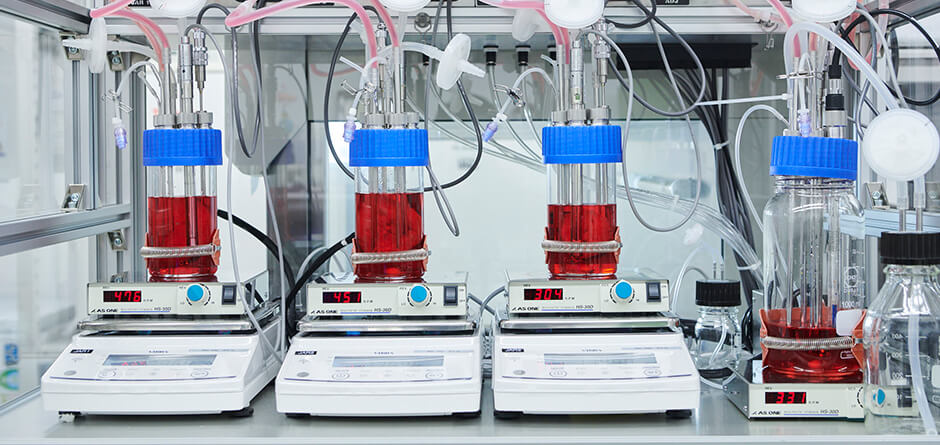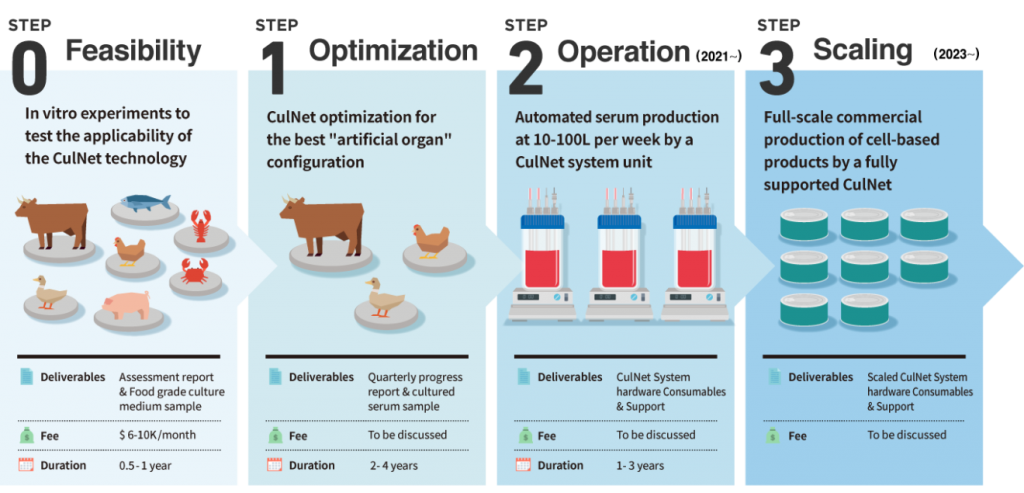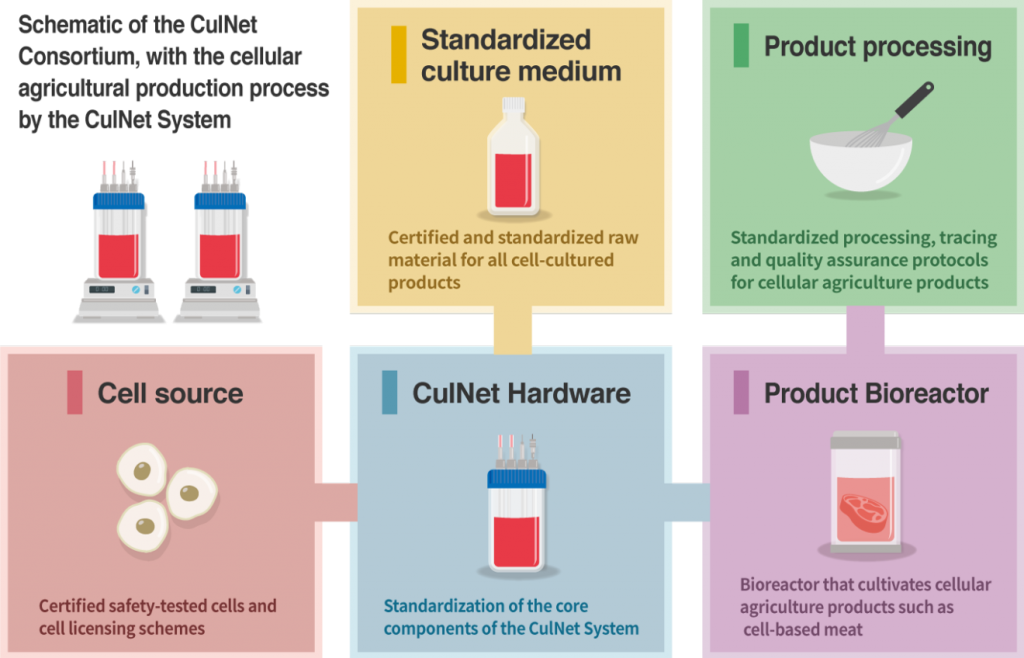IntegriCulture Inc., launches “Uni-CulNet” framework, a standardized cellular agriculture infrastructure

■Summary
Integriculture Inc., a cellular agriculture company, is launching 1). CulNet Pipeline, a cellular agriculture enterprise solutions package, and 2). CulNet Consortium, a scheme for joint development of technical standards of cellular agriculture, under “Uni-CulNet” framework, a standardized cellular agriculture infrastructure. The official launch date is May 7th 2020.
■Background
The sustainability, supply chain security and public health hazards of animal meat, seafood, and animal-based material products such as leather, is a pressing global issue. Animal-based functional compounds such as placenta, squalene and neutraceutical lipids also face similar challenges.
One of the solutions for the above challenges is cellular agriculture. The CulNet system developed by IntegriCulture Inc., enables inexpensive large scale cell culture for animal cells of any types (organs, including muscle and fat), and species – terrestrial, aquatic and avian. The CulNet system can provide sustainable production method to clients in food, materials, cosmetics, neutraceuticals and other sectors.
The two solutions – “CulNet Pipeline” and “CulNet Consortium” under “Uni-CulNet” framework, provide solutions to meet UN-SDG’s and build sustainable future with rich culinary cultures.
■”Uni-CulNet”, a standardized cellular agriculture infrastructure
IntegriCulture Inc. envisions sustainable future with diversity in cultures, where people’s creativity is empowered by democratized cellular agriculture, and people can leverage on the technology to make an infinite variety of products including food, fur, supplements, cosmetics and pharmaceuticals, on the Earth and beyond.
The Uni-CulNet framework provides CulNet system technology as a standardized cellular agriculture infrastructure and rapidly establishes the foundation for democratized cellular agriculture.
Within this framework, “CulNet Pipeline” provides the CulNet technology to a client to develop the client’s unique product, and “CulNet Consortium” provides a client an opportunity to be part of the cellular agriculture infrastructure.
The solutions:
①CulNet Pipelines (Cellular Agriculture Enterprise Solutions with the CulNet system)

We conduct joint research and development and provide the CulNet technology to clients in sectors such as food, cosmetics, pharmaceutical and cellular agriculture, to develop the client’s unique cellular agriculture product with its market launch as the final goal.
A typical such project starts with small-scale feasibility tests over half to one year. This phase can be started by specifying the target species, cell or compound. Physically carrying in the target cells to us may quicken this process.
Then the project may advance to optimization and scaling to commercial production of cell-cultured products. A Go/NoGo decisions can be made at each steps.
As of May 7th, 2020, multiple startups and corporates, including large food companies, are on board with the CulNet Pipeline.
Please visit our product page for more information.
https://integriculture.jp/assets/pdf/product/CulNet_en.pdf
②CulNet Consortium (CulNet System Joint-Development Scheme)

The CulNet Consortium builds an highly accessible cell culture infrastructure to materialize democratized cellular agriculture. The CulNet consortium welcomes domestic and global participants in 5 fields – cell source, culture medium, CulNet hardware, product bioreactor, and product processing.
Please visit our product page for more information.
https://integriculture.jp/assets/pdf/product/CulNet_en.pdf
■Integriculture’s patented networked coculture system (the “CulNet system”)
By culturing target cells with growth factor source cells in connected bioreactors, “CulNet system” utilizes food grade culture medium to efficiently culture target cells without relying on immortalization or externally added growth factors.
Unlike in conventional disposable batch systems, the CulNet system grows cells through continuous flow process, enabling the system to be expanded by simple parallelization as well as increasing its volume.
